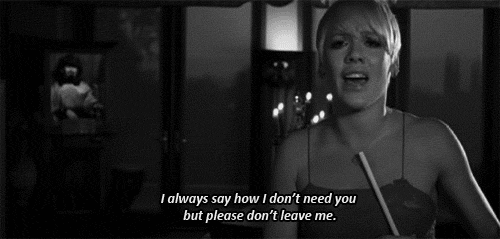On April 21, 2018, I had the worst breakdown of my life.
I was driving at the time, and I pulled into a grocery store parking lot, crying so hard I could barely see. I couldn’t breathe. I felt nauseous and my hands were shaking. The worst part was the feeling of total isolation – that even though I was in a busy parking lot, surrounded by people, none of them cared and I was totally alone. I had no one to call or text – no one who hadn’t heard this a dozen times before, who had talked me down from dangerous highs or up from frightening lows. I could not bother them again.
For months, I had felt like my mind was increasingly divided into two parts – the part that was rational and the part that was sick. It was then, in that car, that the rational part spoke quietly but clearly. It said, You can’t go on like this. You are hurting yourself and scaring the people who love you. You need help now.
I picked up my phone and searched for crisis hotline. The next thing I searched for was counselors.
That’s how I found myself, a few weeks later, in a counselor’s office. I told him about the behaviors and emotions that had become more prevalent over the past year and gradually brought my level of functioning to near zero. I told him about my tendency to cry, more easily than ever. I talked about my self-destructive behaviors, my paranoia, and my mood swings. I left unspoken my fear of abandonment and constant need for validation. I didn’t need to say it.
He looked at me and said, “This sounds a lot like borderline personality disorder.”
—
I guess I knew deep down that this wasn’t just a resurgence in my depression (hence my tendency to refer to my mental health issues as ??? in recent months), but BPD carries such an awful and not completely undeserved stigma that I was shocked and scared by the possible diagnosis.
BPD is one of the Cluster B personality disorders, joined by antisocial, histrionic, and narcissistic personality disorder. Sufferers of these disorders exhibit traits of being dramatic, emotional, and erratic, and are commonly perceived as being manipulative, toxic, and abusive. If you form any relationship with someone who has a florid, undiagnosed, or untreated Cluster B personality disorder, you will carry the scars from that relationship for life. I know. I’ve been there.
Someone who knows that they have a problem and is actively working to overcome it, however, is different. It took that quiet voice of insight to pull me out of my downward spiral. We are still working to determine whether I indeed have the full-blown disorder or just a few of the traits, but the fact remains that my core problem is emotional instability, and the treatment is the same regardless … working to increase distress tolerance and to strengthen both parts of my mind, the rational and the emotional part, so that both will be healthy and neither will be sick.
To those of you who have seen me cry or seen me hurt, I am so sorry. I realize now that these actions were disturbing. If you take nothing else away from this post, I hope you understand this: that none of my actions were intentionally manipulative or dramatic. I think only another person with emotional dysregulation could understand the horrific pain that accompanies sadness, grief, jealousy, anger, etc. And, of course, under the tears and distress is another profound fear: please don’t leave me.

I know you were singing this in your head, too.
At the time I’m writing this, there has been a lot of discussion about mental illness and how best to reach out to someone who may be hurting or suicidal. Now might be a good time to point out that close to ten percent of the population has a diagnosed personality disorder, and the actual prevalence may be much higher. And one of the diagnostic criteria for BPD is suicidal thoughts or non-suicidal self-harm.
Mental illness and personality disorders are never straightforward and easy to fix. Sometimes they’re scary, or they’re messy, or they’re disturbing. But remember that there is a person on the other side of that screen … someone who is sick and scared. Reach out to them, not as a counselor or a doctor, but as a friend.
Some parts of me are broken, but I am more than that. I am here, and I am learning.